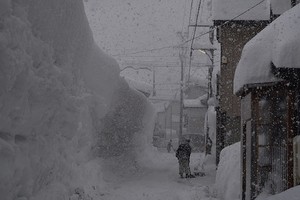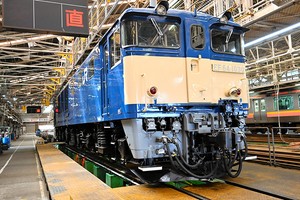THE ASAHI SHIMBUN
March 16, 2022 at 18:53 JST
As a former J.League player himself, new league Chairman Yoshikazu Nonomura knows full well the importance of teams building close ties with their local communities.
Nonomura, 49, was elected chairman on March 15, and is the first former J.League player in the league’s 30-year history to take the helm of the Japan Professional Football League.
“However strong J.League teams become, it is the most important thing for them to build more intimate and deeper relationships with their communities,” he said at a news conference in Tokyo on March 15. “I would like to underline the collaborations between the soccer world and society.”
Nonomura, who worked as the president of the J1 division Hokkaido Consadole Sapporo, among other positions, became the sixth chairman in the J.League.
The previous chairman, Mitsuru Murai, 62, was appointed as an honorary member of the league.
The new chairman is a native of Shizuoka city where soccer is the most popular sport. He attended Shimizuhigashi High School, a soccer powerhouse, in Shizuoka Prefecture.
After he graduated from Keio University, one of the most prestigious private universities in Japan, he joined the J.League’s JEF Ichihara, the current J2 division JEF United Ichihara Chiba, in 1995.
In 2001, Nonomura ended his career as a member of Hokkaido Consadole Sapporo.
He has served as the president of Consadole Sapporo from 2013 through January.
Haruna Takata, 44, who was the president of J2 division V-Varen Nagasaki, Yuta Namiki, 44, the manager of a consulting firm, and others were appointed as new regular board members.
The newly appointed part-time board members include Fumiaki Koizumi, 41, the CEO of J1 division Kashima Antlers F.C. and the chairman of Mercari Inc.; Hiroaki Morishima, 49, the president of J1 Cerezo Osaka; Satoshi Okura, 52, the president of J3 Iwaki F.C.; and Tsuneyasu Miyamoto, 45, a former coach of J1 Gamba Osaka.
Morishima, Okura and Miyamoto were former professional soccer players.
Kengo Nakamura, 41, and Atsuto Uchida, 33, both former players on the Japanese national team, were also chosen as specially appointed board members.
Nonomura’s opening statement and question-and-answer session at a news conference are as follows:
Nonomura: (New board members) include many former J.League players. That means that, after a certain period has passed since the founding of the league, the J.League has secured enough of a lineup to move the Japanese soccer world forward. I expect so much for their future achievements as board members.
However strong J.League teams become, it is the most important thing for them to build more intimate and deeper relationships with their communities. I would like to underline the collaborations between the soccer world and society.
Question: What sort of soccer league do you want to create?
A: It must be outstanding among all those in Asian countries, and also be enjoyable and wonderful.
Q: What kinds of policies are on your mind to improve the quality of soccer?
A: There are factors other than coaches and players. It is absolutely essential for us to nurture personnel, such as training managers or general managers. If changes in regulations are expected to produce better results, I would like to try various things.
Q: Will you implement policies to accelerate the competition, including relaxing the quotas on the number of foreign players?
A: I think that the value of soccer includes the players’ levels on the pitch and the moods created by supporters. Improving that value in the best way is the fastest shortcut to raising the level of Japanese soccer. If there are many foreign players on a team and team members lose close contact with their communities, it will probably be much harder to create a feverish mood at stadiums.
Q: What have you already decided that you want to do during your two-year term?
A: I want to do many things, but I have made one decision up to now. I am planning to visit the home stadiums of all soccer clubs within half a year. The stadium in Sapporo will be the 58th and the last one that I will visit.




















A peek through the music industry’s curtain at the producers who harnessed social media to help their idols go global.
A series based on diplomatic documents declassified by Japan’s Foreign Ministry
Here is a collection of first-hand accounts by “hibakusha” atomic bomb survivors.
Cooking experts, chefs and others involved in the field of food introduce their special recipes intertwined with their paths in life.
A series about Japanese-Americans and their memories of World War II